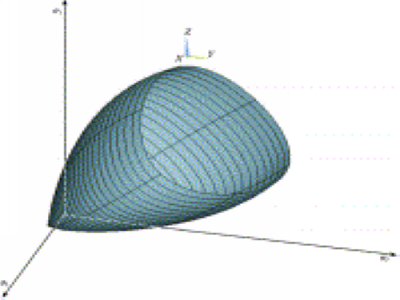Strength criterion and elastoplastic constitutive model of frozen silt in generalized plastic mechanics
Updatetime:2011-03-11From:
【Enlarge】【Reduce】
Triaxial compressive tests of frozen silt were carried out under confining pressures from 0.0 to 14.0 MPa at the temperatures of −2, −4 and −6 °C. A strength criterion based upon experimental results is presented by the combination of extended Lade–Duncan strength function fπ(θ) in π-plane and fp–q(p) in p–q-plane. In order to describe the deformation characteristic of frozen silt, an elastoplastic constitutive model in generalized plastic mechanics has been proposed for the nonlinear behavior of frozen silt, such as the pressure melting and crushing phenomena, strain softening/hardening characteristics and dilatation, etc., by employing an elliptical yield surface, together with a non-associated flow rule for the compressive mechanism, and two parabolic yield surfaces, together with non-associated flow rules for the shear mechanism. The validity of the model is verified by comparing its modeling results with the results of triaxial compressive tests. It is found that the stress–strain curves predicted by this model agree well with the corresponding experimental results both under low and high confining pressures.
The results of experimental investigations for frozen silt, at the temperatures of −2, −4 and −6 °C, are presented in this research. Some of the typical experimental observations are summarized as follows:
• The stress–strain behavior of frozen silt approximately experiences three stages: the initial linear elastic stage, the plastic stage and the softening stage. The frozen silt behaves strain softening in shear process under low confining pressures especially below 3 MPa, but with the increases of confining pressures, the strain softening phenomenon decreases, and the frozen silt even presents strain hardening phenomenon under high confining pressures. When confining pressures increasing to14 MPa, strain softening phenomenon appears again.
• The strength of frozen silt increases with increasing confining pressure at first, but with a further increasing in confining pressure, the strength decreases for pressure melting and crushing phenomena under high confining pressures.
• The volumetric deformation of frozen silt is significantly affected by the confining pressures. The volume of frozen silt reduces with increasing in axial strain under high confining pressures. However, the volume always reduces to a critical value with increasing of axial strain, but with a further increasing in axial strain, the volume expands under low confining pressures, and the dilatant phenomenon takes place in the strain softening stage.
Based on the experimental results, a new strength criterion for frozen silt is proposed by combining extended Lade–Duncan criterion in π-plane with parabolic strength function in coordinate p–q . The strength criterion could well reflect the pressure melting and crushing phenomena of frozen silt.An elastoplastic constitutive model of frozen silt has been proposed by employing an elliptical yield surface, together with a non-associated flow rule for the compressive mechanism, and two parabolic yield surfaces, together with non-associated flow rules for the shear mechanism. By comparing the predictions with the experimental results, it could be concluded that the model could well describe the above-mentioned triaxial compressive mechanical behavior.

Appendix




